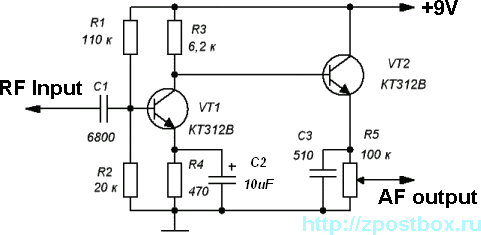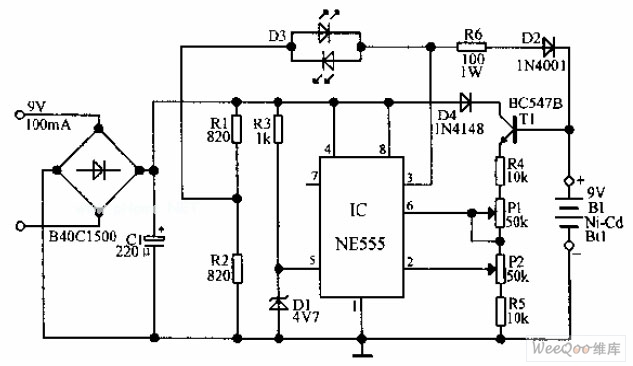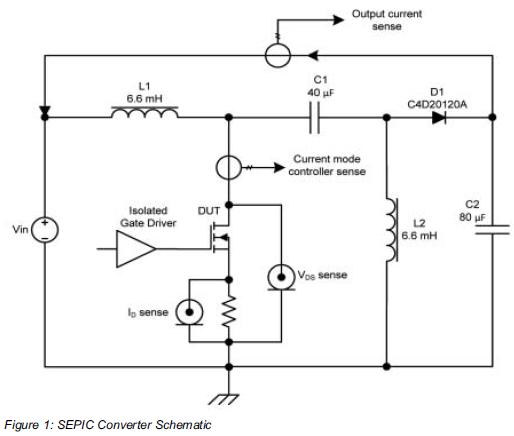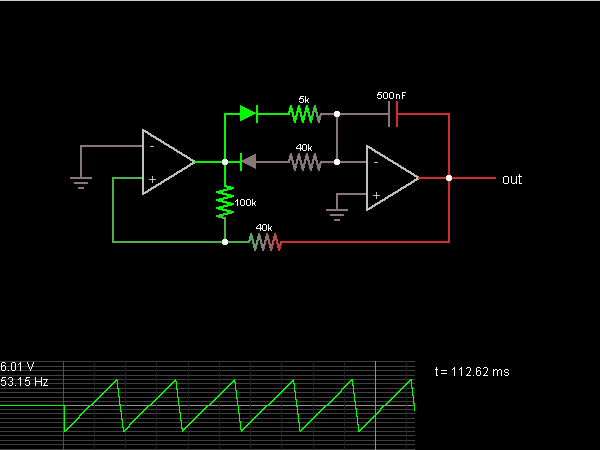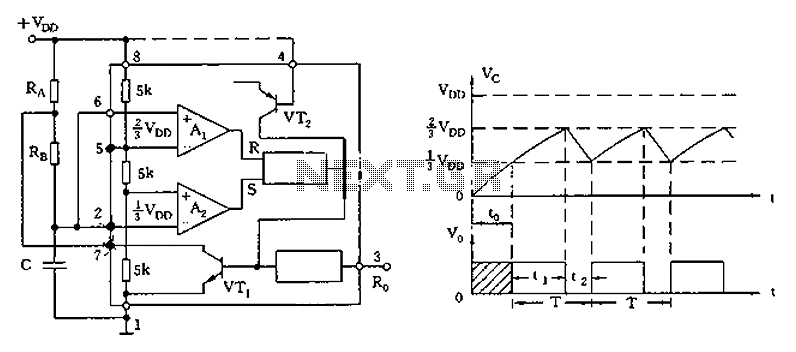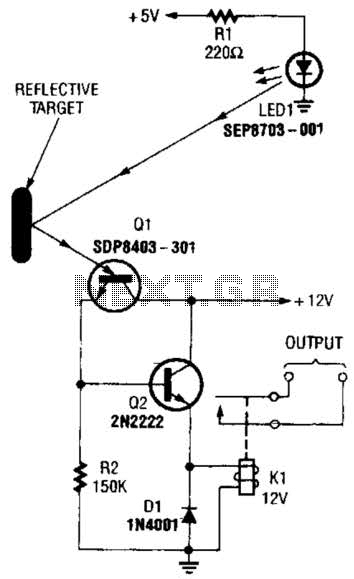
Automatic Car Head Lights Turn-off Circuit
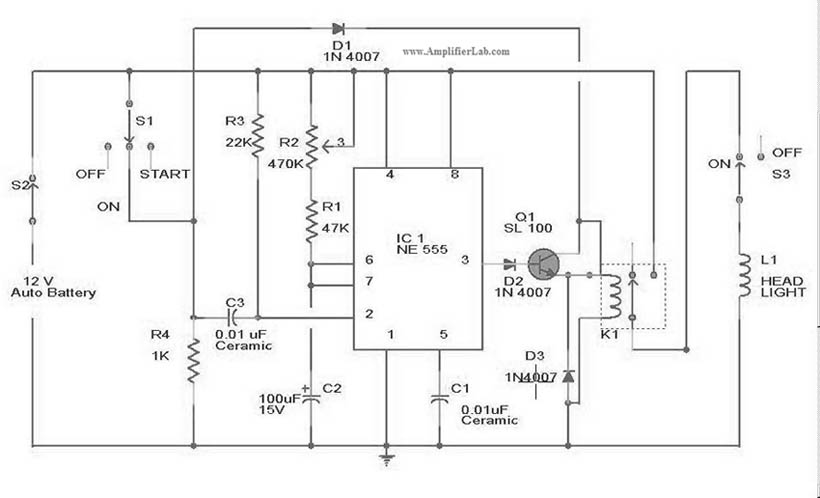
The circuit diagram for the automatic headlights turn-off circuit is presented here. This circuit can be installed in a car.
The automatic headlights turn-off circuit is designed to enhance vehicle safety and convenience by ensuring that the headlights are automatically turned off after a predetermined time when the vehicle is parked. This circuit typically utilizes a timer integrated circuit, such as the NE555, which is configured in monostable mode to achieve the desired time delay.
In this circuit, the headlights are connected through a relay, which is controlled by the output of the timer. When the vehicle's ignition is turned off, the timer is activated, initiating the timing sequence. The duration for which the headlights remain on can be adjusted by changing the resistor and capacitor values connected to the timer IC.
The circuit also includes a switch that can be manually overridden to turn off the headlights immediately, regardless of the timer. Additionally, a diode is included to prevent back EMF from the relay coil, protecting the timer IC from potential damage.
For installation, the circuit requires a power source that is only active when the ignition is off, typically sourced from the vehicle's battery. Proper connections to the vehicle's lighting system and the relay are crucial for reliable operation. This automatic headlight turn-off circuit not only prevents battery drainage but also ensures that the vehicle's lights are managed efficiently, contributing to overall vehicle functionality and user experience.The circuit diagram of Automatic head lights turn off circuit has been explained here. This circuit can be installed in a car. 🔗 External reference
The automatic headlights turn-off circuit is designed to enhance vehicle safety and convenience by ensuring that the headlights are automatically turned off after a predetermined time when the vehicle is parked. This circuit typically utilizes a timer integrated circuit, such as the NE555, which is configured in monostable mode to achieve the desired time delay.
In this circuit, the headlights are connected through a relay, which is controlled by the output of the timer. When the vehicle's ignition is turned off, the timer is activated, initiating the timing sequence. The duration for which the headlights remain on can be adjusted by changing the resistor and capacitor values connected to the timer IC.
The circuit also includes a switch that can be manually overridden to turn off the headlights immediately, regardless of the timer. Additionally, a diode is included to prevent back EMF from the relay coil, protecting the timer IC from potential damage.
For installation, the circuit requires a power source that is only active when the ignition is off, typically sourced from the vehicle's battery. Proper connections to the vehicle's lighting system and the relay are crucial for reliable operation. This automatic headlight turn-off circuit not only prevents battery drainage but also ensures that the vehicle's lights are managed efficiently, contributing to overall vehicle functionality and user experience.The circuit diagram of Automatic head lights turn off circuit has been explained here. This circuit can be installed in a car. 🔗 External reference
